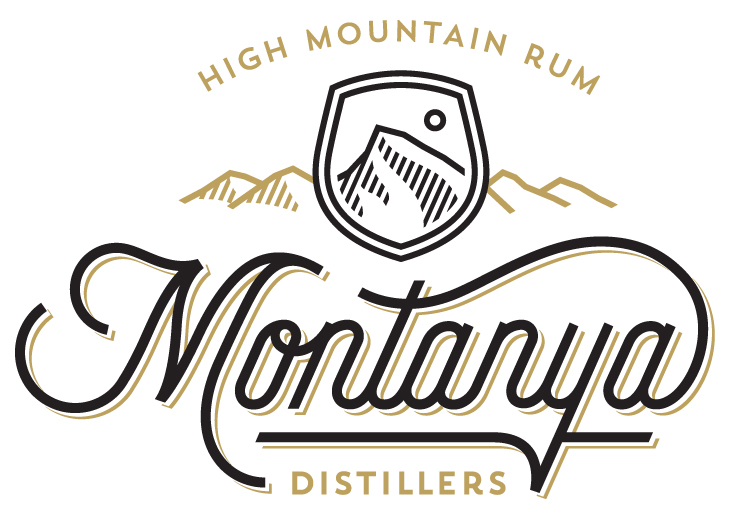Good Water Makes Good Rum
At Montanya Distillers, we love to talk about our water (one more topic that differentiates our rum and probably places us on the science-nerd continuum, which we’re cool with). It’s hard not to get excited about good water. We get to proof our rum with water from a snowmelt-fed aquifer, literally some of the best water in the world.
We know we’re not the only ones interested, because we get questions about our water during tours and in the Tasting Room. If you’re a kindred spirit, here’s everything you need to be in the know about the water we use at Montanya:
Distilling vs. Proofing
Montanya Rums come out of the barrel at 150 proof, so means we add pure, aquifer water to every bottle to achieve 80 proof rum.
Before we get into the details of our water, it’s helpful to understand how water comes into play when you’re making rum. There’s the water that goes into fermenting and distilling (150 gallons per batch per still in our case) and the water that’s used for proofing (60% of every single bottle we make!).
During distillation, we add water to fermentation tanks along with raw sugar cane, molasses and yeast. This water is distilled, which takes almost every single thing (like minerals, heavy metals, fluoride, and chlorine) out of it, so it doesn’t have as much of an impact on the final product. It is proofing water that matters most.
After fermentation, the wash gets transferred to the still where we separate out the rum. It’s 150 proof, or 75% alcohol and 25% water. That’s what we place into barrels for aging. After our rums have aged, we slowly add proofing water to get a final proof of 80 (the rum that is decanted from a barrel is still 150 proof, so quite a difference). The proofing water accounts for 60% of every bottle of Montanya Distillers rum, and for this we use the snowmelt-fed aquifer below our bottling and distribution center.
Why We Love Our Aquifer Water
When we proof our rum, the water we use literally formed from the mountain peaks that surround our bottling center. It comes from an aquifer 350 feet below the rack house and bottling facility. Every spring, the snow on the peaks melts and filters through the ground to an aquifer 350 feet below the surface. (If you’re like our founders’ kids, you may have been lucky enough to build a model of this process during Earth Science at school.)
In a nutshell, the snowmelt that doesn’t join the local river system filters through the ground and into the aquifer. It travels first through grasses, then soil and then various layers of stone, some of which are highly mineralized. Whatever was in the water on the surface is naturally filtered, and the result is incredibly pure and flavorful water. It has natural mineralization and other characteristics of its own that all lend themselves to the quality of Montanya Rum. It’s pretty much a distillers’ dream water source.
Whetstone Mountain sits above our bottling and distribution center, one of many peaks whose snowmelt contributes to local water supplies and the aquifer we use to proof Montanya Rums.
There are no heavy metals or trace elements that are unwelcome during bottling. There’s also no mine drainage or other effluent. The ground minerals add body and flavor to the water, and it has a slightly basic pH which is perfect for making a great rum. As result, the water we use is very minimally treated before it reaches our bottling line (though tests are carried out regularly to assure the highest quality at all times).
But What About the Distillery Water?
Coal Creek at the edge of town in Crested Butte.
The Distillery is located in the town of Crested Butte, two miles north of the DC. The town water supply comes from Coal Creek, which winds its way through the heart of downtown.
That water goes through the town’s water treatment system and then to our distillery and into the fermentation tanks. As we mentioned, this water gets distilled as part of the rum-making process, so anything in the water source—say chlorine—gets left behind in the still. The way we like to think about it is that what gets put into a barrel is 75% distilled rum and 25% distilled water.
Why Good Water Matters
Will you permit a #humblebrag? We believe that exceptional water helps Montanya Rums get noticed.
Water impacts flavor. Take scotch, for example. The flavors people love have a lot to do with the water used and the cool aging conditions (peat plays a role too, of course).
Often, rum comes from places where the water supply is primarily fed by rain water—the water has a high proportion of heavy metals. Most rum distillers have to Reverse Osmosis (RO) filter their water, which makes the water neutral, flavorless, and tasteless. In other words, the ingredient that makes up a majority (60 percent) of every bottle contributes zilch in terms of flavor or other characteristics.
That’s not true with Montanya rums. Sixty percent of what goes into every bottle has natural mineralization and delicious characteristics of its own. So like we said, we can’t help ourselves: we love to talk about our water.
Additional Posts from Montanya Distillers
A blog post on making great rum cocktails (and how we do it at Montanya Distillers).
Read more about becoming the first distillery in Colorado to earn recognition for putting people and the planet first.






